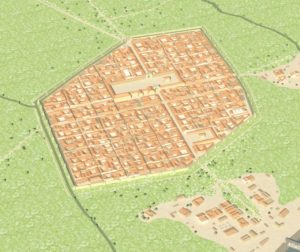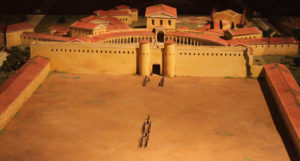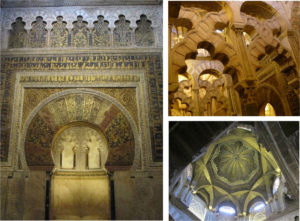Cordova is a city with more than 5,000 years of history, whose origin dates back to the Calcolithic period (III/II millennium B.C.), reaching great moments of splendor as capital of the Roman Baetica province and the caliphate of al-Andalus. Its location along the Guadalquivir River, next to Sierra Morena, made it a strategic settlement and a communication bridge between the South and the North of the Iberian Peninsula.

The pre-Roman Corduba was located on the Cerro de los Quemados (Cruz Conde Park), on a slightly hill, which allowed both its defense and control of the river, the main way out of the mineral extracted from the mountains. The mining and agricultural wealth allowed to pass from a village of cabins dated in the Final Bronze (IX-VIII B.C. centuries) to a nucleus of urban connotations already in the orientalizing period (VII-VI B.C. centuries). After the fall of Tartessos, the Cordovaa turdetana remained integrated in the commercial circuits of the zone, conserving a certain hierarchy.

The arrival of Rome was not a violent break with the existing habitat; In fact, the coexistence of the turdetan village next to the Roman camp has been defended, that later would give rise to the republican city, located to 750 meters to the NE. The importance of the latter was concentrating the population until it became the only inhabited nucleus from the 1st century BC. As a result of the Civil War between Caesar and Pompey, Cordoba suffered great destruction, but quickly gained the favor of Emperor Augustus, who made it the capital of the province of Baetica under the name of Colonia Patricia. A period of splendor began, as evidenced by the expansion of the city, the provision of the main buildings for shows and systems for the collection and evacuation of water, the marbling and decoration of public and private spaces, including necropolis, which Made Cordoba a small copy of the capital: Rome.

From the third century AD, Corduba recovered its original name and began the first changes in its urban physiognomy in which, perhaps, could influence the effects of an earthquake, the construction outside of the architectural complex of Cercadilla or its possible appointment as Head of the Hispaniarum diocese. The political-religious pre-eminence of Cordova had to diminish towards principles of century V d.C, when Hispalis became the new capital of the Bética. During the period of Visigoth domination of the city (late sixth century – early eighth), the main novelty will be the existence of a fully consolidated Christian community, which will have its reflection in an architecture materialized in various churches and basilicas.

The Islamic presence from the year 711 was the beginning of certain political, religious and urban transformations that gave rise to a new model of city. La Madina maintained its physiognomy, with constant repairs of the walled enclosure and new infrastructures, among which the construction of the Mezquita-Aljama, which, along with the configuration of the almunias and the first outskirts of the suburbs, would form the basis on which The Cordoba Califal (929-1031) would be developed.
The rupture of the artificial symbolic and propagandistic foundations on which the caliphic state was sustained occurred around the year 1009, at which time the fitna (civil war) began, which lasted until 1031. The history of the Qurtuba During the kingdoms of Taifas and the period of domination Almohade, with the transfer of the capital to Seville, contrasts with the greatness known until then, that definitively ends with the Christian conquest of the city in 1236.

